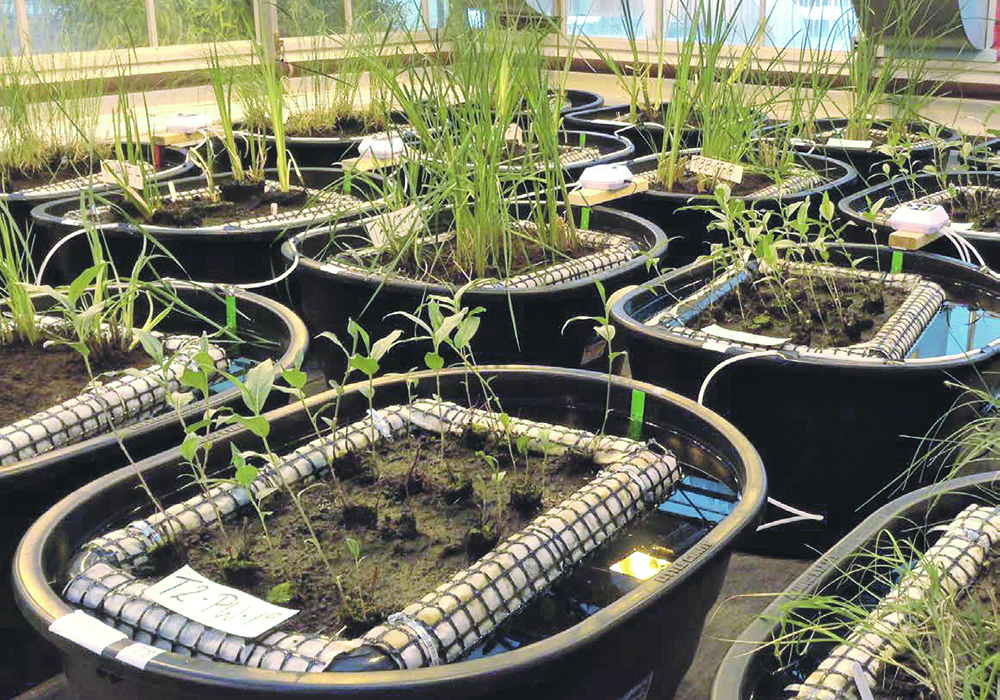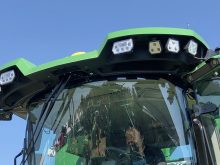OLDS, Alta. — Researchers want to know if floating islands filled with native plants and placed in feedlot runoff ponds will help remove unwanted contaminants.
“This project is looking at the impact these islands have on water quality and whether or not it can improve the water quality at feedlots,” said Daniel Karran, hydrologist and instructor in the Werklund School of Agriculture Technology at Olds College.
“It can be a low-cost way to clean the water and make it more reusable at these operations.”
The project began in 2019 when researchers at Olds studied nutrient and contaminant uptake with a variety of plants including cattails, wheat sedge, sweet flag, smartweed and water sedge. In a greenhouse, the plants were placed in troughs that were filled with water enriched with high concentrations of nutrients. All plants removed some nutrients, but the cattails performed best.
In the second year of the project, water was used from the college’s feedlot catch basin with good response from the plants. A variety of species were able to remove 77 to 84 percent of the phosphorus in the water and 27 to 45 percent of the potassium.
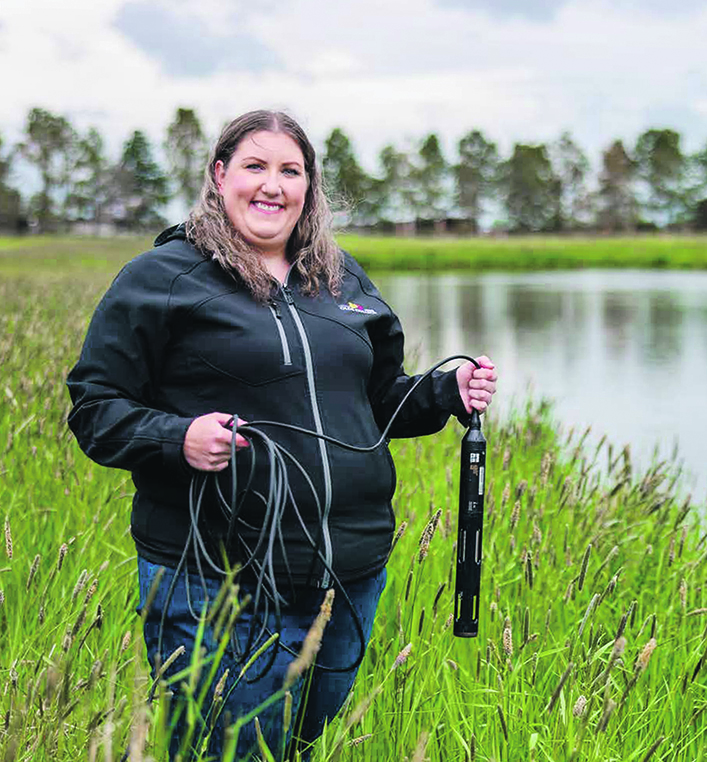
“The greenhouse trials from phase one and two of this research were very successful. There are a lot of contaminants in these waters that are good for plants. Nutrients is one of them and that has been the focus of phase one and two,” said Karran.
Excessively high concentrations of nutrients can cause algae blooms, which are sometimes toxic to livestock.
“The hypothesis is that if you take these nutrients out of the water, then that would be prevented,” said Karran.
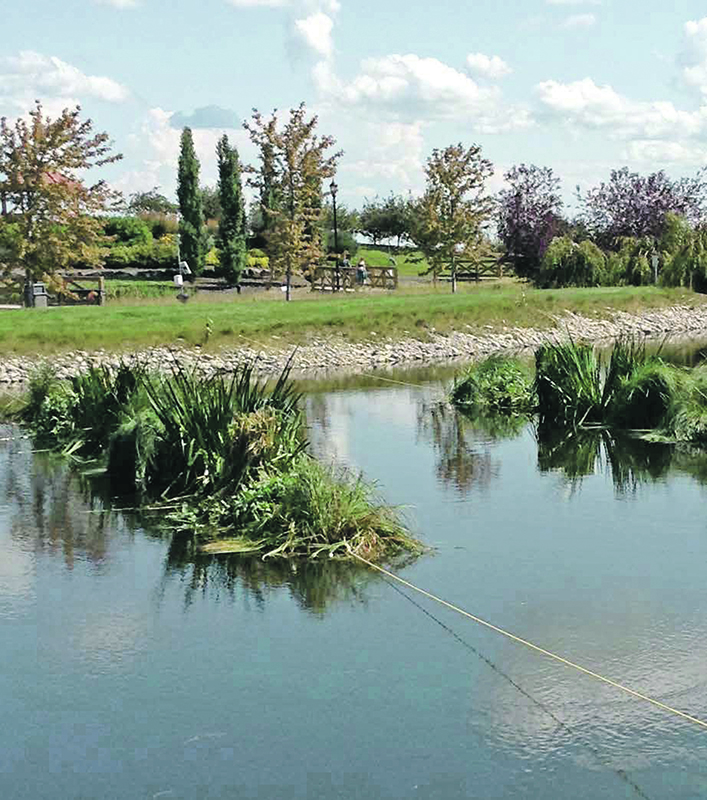
This spring, he and his team will monitor water quality in four small holding ponds. In the fall, before the water freezes, the floating islands of native vegetation will be placed in two of the four ponds. The largest pond will have 41 floating islands, with a selection of plants, that will cover five to 25 percent of the surface area. The other two ponds will act as controls.
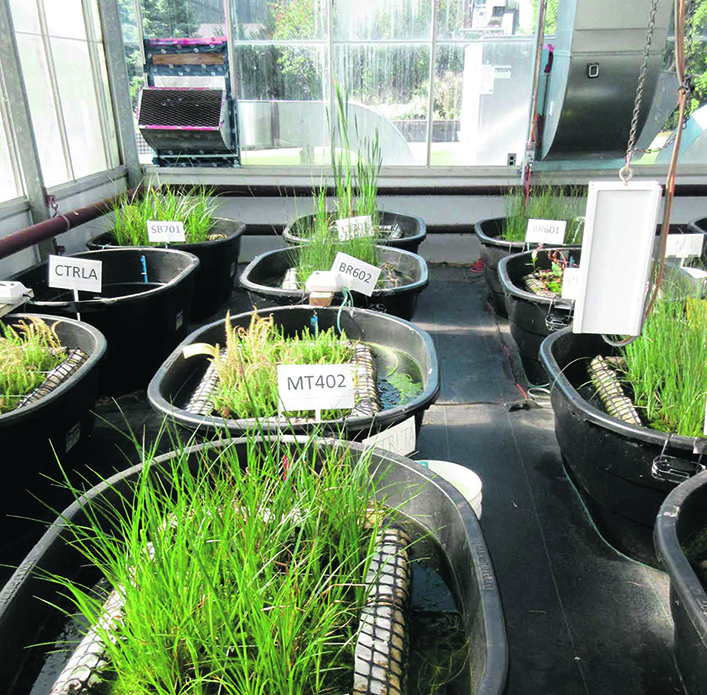
The floating islands are made of a plastic liner filled with soil media in which the plants are placed. Eventually plant roots will grow into the water and absorb nutrients. The tops of the plants, where nutrients are stored, are cut off in the fall.
“There are a lot of contaminants in these ponds. This could be a low-cost solution for feedlot producers to take these contaminants out of the ponds, reuse the water, which will be a big challenge in the future,” said Karran.

